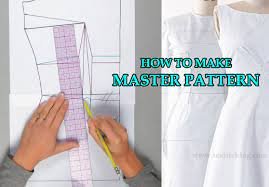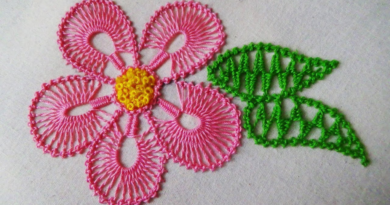Free Pattern Master Course (1year Diploma)
The Pattern master develops pattern for cutting fabric spread in layers into various components as per requirement for a particular style and garment size.
Brief Job Description:- Pattern Master uses ordinary and basic hand operated equipment and tools for measuring, marking and cutting to create patternson nontextile cheaper substrate (usually hard paper board) for each size within given range of apparel and/or garment design , made –ups and home furnishing articles . A complete pattern consists of various components cut to size and thus a full pattern for a particular garment , made –ups and home furnishing article comprises various shapes and sizes of paper boards cut and preserved as set.
Personal Attributes:- He/she should have flair for art and drawings and should have basic mathematical skills, particularly making calculations and measuring. He/she should possess good written and oral communication skills. He/she should be patient and tenacious for long hours of standing work in a calm atmosphere.He should be imaginative, creative and analytic Pattern Master Course.
Preparation of pattern with simple hand-operated tools and equipment and navigation and measurement of competencies related to pattern making Pattern Master Course:-
PC1. Collect, Comprehend and Compile information from various sources viz. Designer/Buyer/Merchandiser
PC2. Analyse information and translate inputs as per company procedure
PC3. Coordinate with concerned Designer and Merchandiser for clarity of information against techpack received
PC4. Incorporate and accommodate review inputs alongside the techpack
PC5. Create paper patterns with all details like notches, parts marking (pockets, button holes, pleats, etc.),pattern marking for bulk production
Checking the pattern for information contents, review and update Pattern Master Course:-
PC1. Check sketches, design specifications to meet quantities, shapes and sizes of pattern parts
PC2. Test pattern by making garment sample to check fit, fall, and other aesthetic attributes
PC3. Review pattern against test performance Pattern Master Course.
PC4. Accommodate and incorporate changes in the pattern
PC5. Create final pattern with all changes accommodated
PC6. Create master pattern for different sizes of garments made ups and home furnishing articles within a style for mass production.


Involves identifying environmental needs and requirement to the workplace, health and safety hazards and ensuring mechanism to safeguard against hazards:-
PC1. Keep vigilance for potential risks and threats associated with workplace and equipment
PC2. Handle tools and equipmentslike cutters, scissors, etc. safely and securely Pattern Master Course.
PC3. Monitor the workplace and work processes for potential risks and threats
PC4. Participate in mock-drills/evacuation procedures organized at the workplace
PC5. Undertake first-aid, fire-fighting and emergency response training
Maintain the workarea, tools and machines Pattern Master Course:- To be competent, the user/individual on the job must be able to:
PC1. Handle materials, machinery, equipment and tools safely and correctly
PC2. Use correct lifting and handling procedures
PC3. Use materials to minimize waste
PC4. Maintain a clean and hazard free working area Pattern Master Course.
PC5. Maintain tools and equipment
PC6. Carry out running maintenance within agreed schedules
PC7. Carry out maintenance and/or cleaning within one’s responsibility
PC8. Report unsafe equipment and other dangerous occurrences
PC9. Ensure that the correct machine guards are in place
PC10.Work in a comfortable position with the correct posture
PC11.Use cleaning equipment and methods appropriate for the work to be carried out
PC12.Dispose of waste safely in the designated location
PC13. Store cleaning equipment safely after use Pattern Master Course.
PC14.Carry out cleaning according to schedules and limits of responsibility

Comply with industry, and organizational requirements Pattern Master Course:- To be competent, the user/individual on the job must be able to:
PC1. Carry out work functions in accordance with legislation and regulations, organizational guidelines and procedures
PC2. Seek and obtain clarifications on policies and procedures, from your supervisor or other authorized personnel
PC3. Apply and follow these policies and procedures within your work practices
PC4. Provide support to your supervisor and team members in enforcing these considerations
PC5. Identify and report any possible deviation to these requirements
Guidelines for Assessment:-
1. Criteria for assessment for each Qualification Pack will be created by the Sector Skill Council. Each Performance Criteria (PC) will be assigned marks proportional to its importance in NOS. SSC will also lay down proportion of marks for Theory and Skills Practical for each
PC 2. The assessment for the theory part will be based on knowledge bank of questions approved by the SSC
3. Individual assessment agencies will create unique question papers for theory part for each candidate at each examination/training center (as per assessment criteria below)
4. Individual assessment agencies will create unique evaluations for skill practical for every student at each examination/training center based on this criteria
5. To pass the Qualification Pack, every trainee should score a minimum of 70% aggregate in a QP
6. In case of successfully passing only certain number of NOS’s, the trainee is eligible to take subsequent assessment on the balance NOS’s to pass the Qualification Pack Pattern Master Course.

(Plan and Prepare for process of pattern making as per techpack received) Pattern Master Course:-
PC1. Collect, Comprehend and Compile information from various sources viz. Designer/Buyer/Merchandiser
PC2. Analyse information and translate inputs as per company procedure
PC3. Coordinate with concerned Designer and Merchandiser for clarity of information against techpack received
PC4. Incorporate and accommodate review inputs alongside the techpack
PC5. Create paper patterns with all details like notches, parts marking (pockets, button holes, pleats, etc.) for bulk production
(Inspect and validate pattern):- PC1. Check sketches, design specifications to meet quantities, shapes and sizes of pattern parts
PC2. Test pattern by making garment sample to check fit, fall, and other aesthetic and functional attributes
PC3. Review pattern against test performance
PC4. Accommodate and incorporate changes in the pattern
PC5. Create final pattern with all changes accommodated Pattern Master Course.
PC6. Create master pattern for different sizes of garments, madeups and home furnishing articles within a style for mass production
(Maintain health, safety and security in the pattern making workplace):-
PC1. Keep vigilance for potential risks and threats associated with workplace and equipment like cuts from cutters, scisors, shears, etc.
PC2. Handle tools and equipments like cutters, scissors, etc. safely and securely
PC3. Monitor the workplace and work processes for potential risks and threats
PC4. Participate in mockdrills/evacuation procedures organized at the workplace
PC5. Undertake first-aid, firefighting and emergency response training
(Maintain workarea, tools and machines):- PC1. Handle materials, machinery, equipment and tools safely and correctly
PC2. Use correct lifting and handling procedures
PC3. Use materials to minimize waste
PC4. Maintain a clean and hazard free working area
PC5. Maintain tools and equipments
PC6. Carry out running maintenance within agreed schedules
PC7. Carry out maintenance and/or cleaning within one’s responsibility
PC8. Report unsafe equipment and other dangerous occurrences
PC9. Ensure that the correct machine guards are in place
PC10. Work in a comfortable position with the correct posture Pattern Master Course.
PC11. Use cleaning equipment and methods appropriate for the work to be carried out
PC12. Dispose of waste safely in the designated location
PC13. Store cleaning equipment safely after use
PC14. Carry out cleaning according to schedules and limits of responsibility

(Comply with industry, regulatory and organizational requirements):- PC1. Carry out work functions in accordance with legislation and regulations, organizational guidelines and procedures
PC3. Apply and follow these policies and procedures within your work practices
PC4. Provide support to your supervisor and team members in enforcing these considerations
PC5. Identify and report any possible deviation to these requirements
Organizational Contex:- he user/individual on the job needs to know and understand:
KA1. Personal hygiene and duty of care
KA2. Safe working practices and organizational procedures
KA3. Limits of your own responsibility
KA4. Ways of resolving with problems within the work area
KA5. The production process and the specific work activities that relate to the whole process
KA6. The importance of effective communication with colleagues
KA7. The lines of communication, authority and reporting procedures
KA8. The organization’s rules, codes and guidelines (including timekeeping)
KA9. The company’s quality standards
KA10. The importance of complying with written instructions
KA11. Equipment operating procedures / manufacturer’s instructions
Technical Knowledge:- The user/individual on the job needs to know and understand:
KB1. Work instructions and specifications and interpret them accurately Pattern Master Course.
KB2. Method to make use of the information detailed in specifications andinstructions
KB3. Relation between work role and the overall manufacturing process
KB4. The importance of taking action when problems are identified
KB5. Different ways of minimizing waste
KB6. The importance of running maintenance and regular cleaning
KB7. Effects of contamination on products i.e. Machine oil, dirt
KB8. Common faults with equipment and the method to rectify
KB9. Maintenance procedures
KB10. Hazards likely to be encountered when conducting routine maintenance
KB11. Different types of cleaning equipment and substances and their use
KB12. Safe working practices for cleaning and the method of carrying them out Pattern Master Course.
Core Skills/ Generic Skills:- The user/individual on the job needs to know and understand how to:
SA1. Write and document appropriate technical forms, job cards, inspection sheets as required format of the company
Reading Skills:- Reading Skills The user/individual on the job needs to know and understand how to:
SA2. Read and comprehend basic English to read and interpret indicators in the machine and operating manuals, job cards, visual cards
SA3. Read and understand manuals, health and safety instructions, memos, reports, job cards, etc
Oral Communication (Listening and Speaking skills):- The user/individual on the job needs to know and understand how to:
SA4. Speak and communicate effectively to peers and supervisors
SA5. Give clear instructions to co-workers, subordinates, others
SA6. Use correct technical term while interacting with supervisor
Professional Skills:- The user/individual on the job needs to know and understand how to:
SB1. Take appropriate decisions regarding to responsibilities
SB2. Assess for any damage/faulty component in the concerned machinery and take action accordingly SB3. Evaluate the decision and conduct basic trouble shooting
Plan and Organize:- The user/individual on the job needs to know and understand how to:
SB4. Plan and manage work routine based on company procedure
SB5. Work with supervisors/team mates to carry out work related tasks
SB6. Plan for cleaning and lubricating the concerned machinery daily
SB7. Plan for cleaning the concerned tools and workplace daily before and after operation
Customer Centricity:- The user/individual on the job needs to know and understand how to:
SB8. Ensure and follow organizational procedures pertaining to health and safety are followed
Problem Solving:- The user/individual on the job needs to know and understand how to:
SB7. Solve operational role related issues
Analytical Thinking:- The user/individual on the job needs to know and understand how to:
SB9. Diagnose common problems in the machine based on visual inspection, sound, temperature, etc.
Critical Thinking:- The user/individual on the job needs to know and understand how to:
SB10. Analyze, evaluate and apply the information gathered from observation, experience, reasoning or communication to act efficiently









